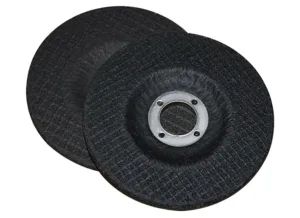In the world of manufacturing and fabrication, precision is paramount. From intricate metalwork to fine woodworking, achieving the desired level of detail often relies on the tools at hand. Among these tools, die grinders stand out for their versatility and precision. And when it comes to enhancing their capabilities, the choice of grinding wheels plays a pivotal role. In this blog, we’ll delve into the world of grinding wheels specifically tailored for die grinders, exploring their characteristics, applications, and significance in various industries.
Understanding Die Grinders
Before we dive into the specifics of grinding wheels, let’s first understand what die grinders are and their significance in the realm of manufacturing. Die grinders are handheld power tools characterized by their compact size and high-speed rotation. They’re commonly used for tasks requiring precision, such as shaping, grinding, deburring, and polishing. Their versatility makes them indispensable in industries ranging from metalworking and fabrication to woodworking and automotive.
The Role of Grinding Wheels
Grinding wheels are essential accessories for die grinders, enabling users to achieve precise cuts, smooth finishes, and intricate shapes. These wheels are typically composed of abrasive particles bonded together to form a solid, circular shape. The choice of abrasive material, grit size, and wheel composition can significantly impact the performance and versatility of die grinders.
Characteristics of Grinding Wheels for Die Grinders
Grinding wheels for die grinders come in various shapes, sizes, and compositions, each tailored to specific tasks and materials. Some common characteristics include:
- Abrasive Material: Grinding wheels may be made from natural abrasives like aluminum oxide, silicon carbide, or diamond, or synthetic abrasives such as ceramic alumina. The choice of abrasive material depends on factors like material hardness, desired finish, and application requirements.
- Grit Size: The grit size of the abrasive particles determines the aggressiveness and finish of the grinding process. Finer grit sizes produce smoother finishes, while coarser grit sizes are more aggressive and efficient at material removal.
- Wheel Shape: Grinding discs for die grinders come in various shapes, including cylindrical, conical, and spherical. The shape of the wheel influences accessibility and maneuverability, especially in tight spaces or intricate workpieces.
- Bonding Agent: The bonding agent holds the abrasive particles together and affects the durability and stability of the grinding wheel. Common bonding agents include vitrified bonds, resin bonds, and metal bonds, each offering unique properties suited to different applications.
Applications of Grinding Wheels for Die Grinders
Grinding wheels for die grinders find applications across a wide range of industries and tasks, including:
- Metalworking: Deburring, shaping, and polishing metal components in fabrication and machining processes.
- Woodworking: Smoothing surfaces, shaping edges, and removing imperfections in wood and composite materials.
- Automotive: Grinding and finishing tasks in automotive repair, restoration, and customization.
- Aerospace: Precision machining and finishing of aerospace components requiring tight tolerances and high-quality finishes.
Conclusion
Grinding discs are indispensable companions to die grinders, enabling users to unleash the full potential of these versatile power tools. By understanding the characteristics, applications, and significance of grinding wheels for die grinders, manufacturers, craftsmen, and hobbyists alike can achieve precise results and unlock new possibilities in their respective fields. Whether shaping metal, refining wood, or perfecting automotive components, the right grinding wheel paired with a die grinder can turn ordinary tasks into extraordinary accomplishments, one precise cut at a time.



